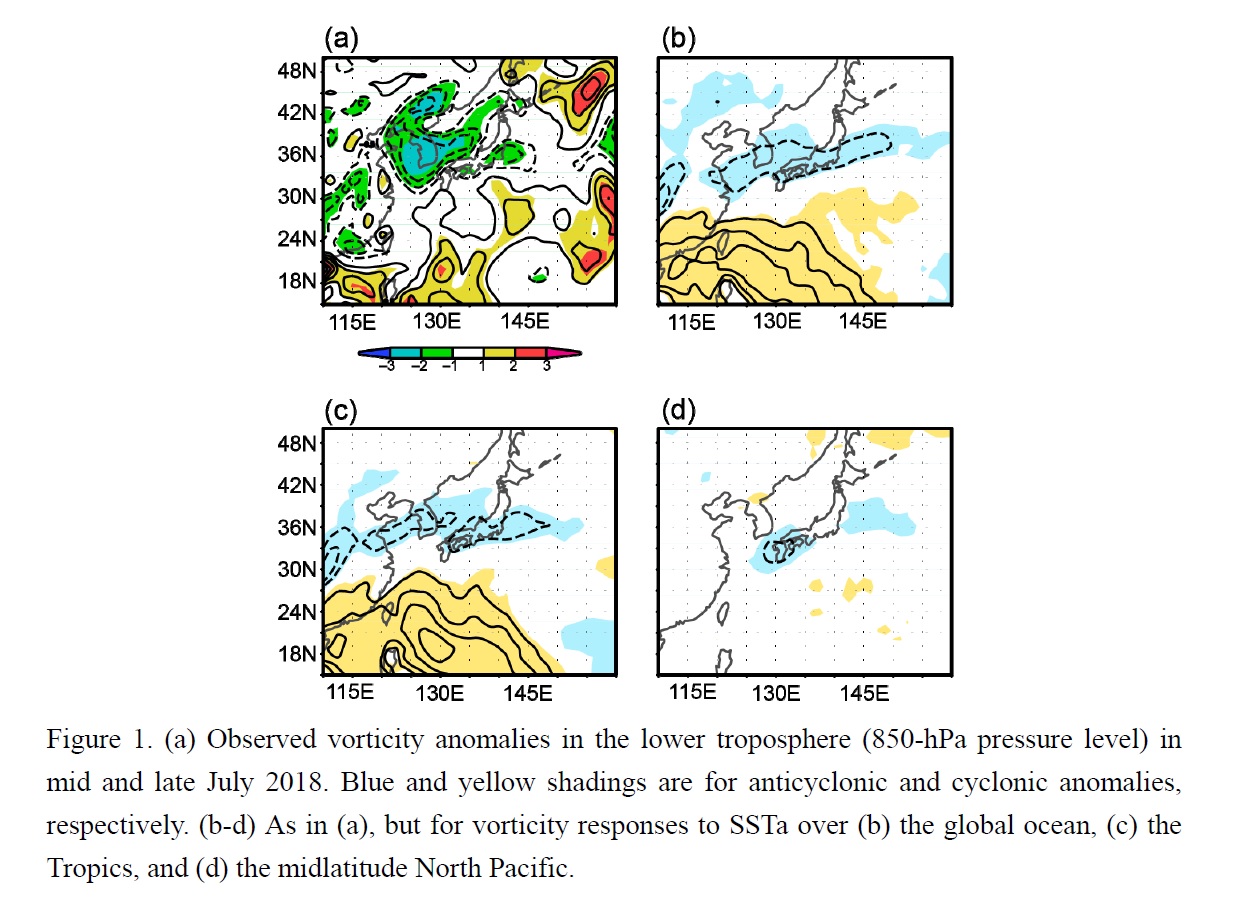Graphical Abstract
Nishii, K., B. Taguchi, and H. Nakamura, 2020: An atmospheric general circulation model assessment of oceanic impacts on extreme climate events over Japan in July 2018. J. Meteor. Soc. Japan, 98, 801-820.
Special Edition on Extreme Rainfall Events in 2017 and 2018
https://doi.org/10.2151/jmsj.2020-041
Graphical Abstract
Plain Language Summary:
Oceanic impacts on anomalous atmospheric circulation that caused the heavy rain event and heat wave observed in July 2018 over Japan are investigated. While a pair of
anticyclonic and cyclonic anomalies during the heavy rain was unlikely forced by the sea surface temperature anomaly (SSTa), a warm anticyclonic anomaly over Japan during the heat wave was partly forced by the SSTa in the midlatitude North Pacific Ocean as well as in the Tropics.
Highlights:
- Impacts of midlatitude and tropical oceans on the circulation anomalies that induced the two extreme events are assessed separately with an atmospheric general circulation model (AGCM).
- The circulation anomaly that induced the heavy rain cannot be reproduced in the model, suggesting that the anomaly was unlikely forced by SSTa but likely due to internal variability.
- The circulation anomaly that induced the heat wave is reproduced in the model, which suggests an active role of both the tropical and midlatitude SSTa in forcing the circulation anomaly.







